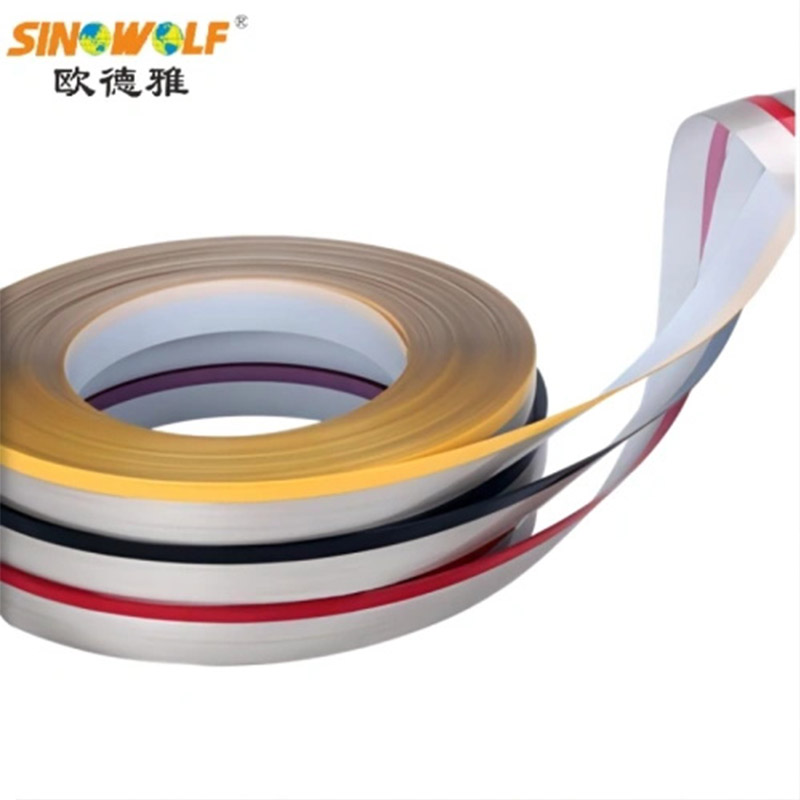Why Choose Acrylic Edge Banding Tape for Modern Furniture Design?
In the competitive world of furniture manufacturing and design, Acrylic Edge Banding Tape has emerged as a premium solution for finishing edges with precision and durability. This advanced material offers superior performance characteristics compared to traditional PVC or wood Veneer Edge Banding options. With its combination of aesthetic appeal and functional benefits, acrylic edge banding is revolutionizing modern furniture production.

Key Characteristics of Acrylic Edge Banding Tape
Acrylic edge banding tape typically ranges from 0.5mm to 3mm in thickness, offering designers flexibility in achieving different visual effects. The material boasts an impressive 92-95% light transmission rate when clear or translucent, creating stunning lighting effects in illuminated furniture pieces. For colored variants, the pigment concentration ensures 100% opacity with consistent coloration throughout the material.
The thermal stability of acrylic edge banding is exceptional, with a heat deflection temperature of 85-105°C (185-221°F), allowing it to maintain structural integrity in various environmental conditions. Its surface hardness measures 3H-4H on the pencil hardness scale, providing excellent resistance to scratches and daily wear. The material's tensile strength of 60-75 MPa ensures it can withstand significant mechanical stress without cracking or delaminating.
From a safety perspective, acrylic edge banding meets UL94 HB flammability standards and is certified as REACH and RoHS compliant, making it suitable for use in residential, commercial, and healthcare environments. The UV-resistant formulations maintain their color stability with less than 5% color shift after 1000 hours of accelerated weathering testing.
Application Scenarios
The versatility of acrylic edge banding tape makes it suitable for numerous applications across different furniture segments:
Kitchen Cabinetry: The moisture resistance (water absorption rate of 0.3-0.4%) makes acrylic edge banding ideal for kitchen environments. Its non-porous surface prevents bacterial growth and allows for easy cleaning with common household disinfectants.
Office Furniture: In high-traffic work environments, the abrasion resistance (able to withstand 10,000+ cycles in Taber abrasion tests) ensures long-lasting performance on desk edges, cabinet fronts, and partition panels.
Retail Fixtures: The high-gloss finishes (up to 95% gloss at 60° measurement) create premium visual displays for product showcases, while the impact resistance (IZOD impact strength of 2-3 kJ/m²) protects against accidental bumps from shopping carts or merchandise.
Healthcare Furniture: The chemical resistance (unaffected by 70% isopropyl alcohol and common disinfectants) combined with seamless edges that prevent dirt accumulation makes acrylic edge banding suitable for hospitals and clinics.
Residential Furniture: Available in over 200 standard colors and custom color matching capabilities, acrylic edge banding allows designers to create cohesive aesthetics across tables, shelves, and entertainment units.
Outdoor Furniture: Special UV-stabilized formulations maintain their appearance with minimal yellowing (Delta E <3 after 2000 hours of QUV testing), making them suitable for protected outdoor applications.
Installation Considerations
Proper installation of acrylic edge banding requires specific techniques to achieve optimal results:
The recommended application temperature ranges from 150-180°C (302-356°F) for hot-melt adhesive systems, with a bonding pressure of 2-4 bar (29-58 psi) applied for 15-30 seconds. For cold adhesives, curing times vary from 24-72 hours depending on environmental conditions.
Edge preparation is critical, with substrate moisture content needing to be below 8% for optimal adhesion. The trimming process should use carbide-tipped tools rotating at 18,000-22,000 RPM to achieve clean edges without chipping. Post-installation, a minimum of 2 hours should be allowed for the adhesive to achieve handling strength before further processing.
Maintenance and Care
To preserve the appearance and functionality of acrylic edge banding, follow these maintenance guidelines:
Cleaning: Use a soft, lint-free cloth dampened with a mild soap solution (pH 6-8). Avoid abrasive cleaners containing particles larger than 50 microns as they may cause micro-scratches.
Stain Removal: For stubborn stains, isopropyl alcohol (≤70% concentration) can be used, but prolonged contact should be avoided. Always test cleaning solutions in inconspicuous areas first.
Heat Protection: While acrylic can withstand brief exposure to temperatures up to 90°C (194°F), prolonged contact with hot objects (above 70°C/158°F) should be avoided to prevent surface deformation.
Scratch Repair: Minor surface scratches can often be polished out using a specialized acrylic polish with a grit size of 3000-5000, followed by a final polish with a 8000-12000 grit compound.
UV Protection: For applications in sun-exposed areas, apply a UV-protective coating with a 380-400nm blocking capability every 12-18 months to maintain color stability.
Comparative Advantages
When compared to alternative edge banding materials, acrylic demonstrates superior performance in several key areas:
Acrylic edge banding maintains dimensional stability with a coefficient of thermal expansion of 7×10⁻⁵/°C, significantly lower than PVC's 8×10⁻⁴/°C. The colorfastness outperforms wood veneer by 300% in accelerated aging tests. From an environmental perspective, acrylic is 100% recyclable without loss of material properties, unlike melamine-faced options.
The bond strength of properly applied acrylic edge banding exceeds 4 N/mm in peel tests, compared to 2.5 N/mm for standard PVC alternatives. The refractive index of 1.49 gives acrylic its characteristic brilliance, creating more vibrant colors and deeper visual effects than other synthetic edge materials.






